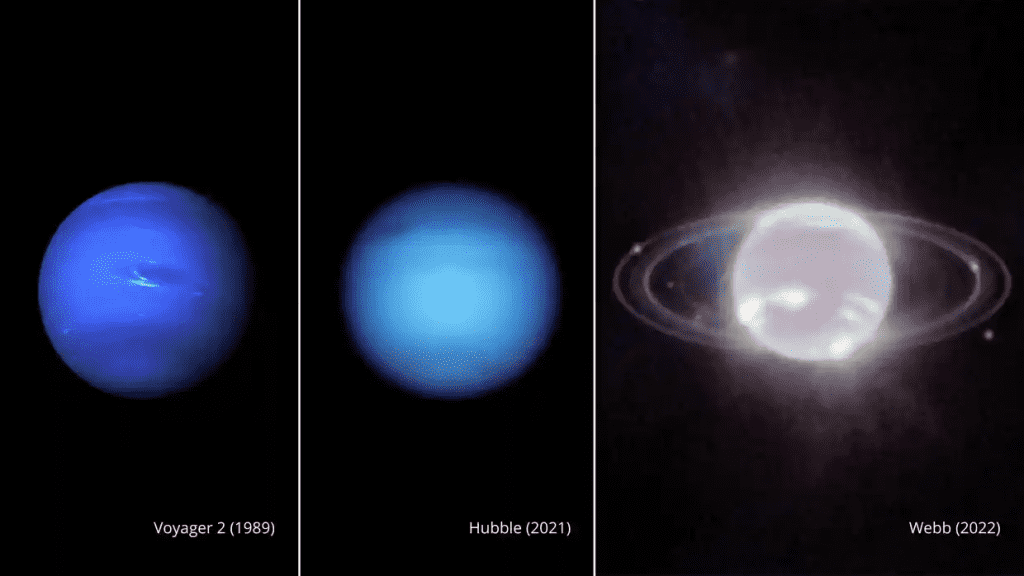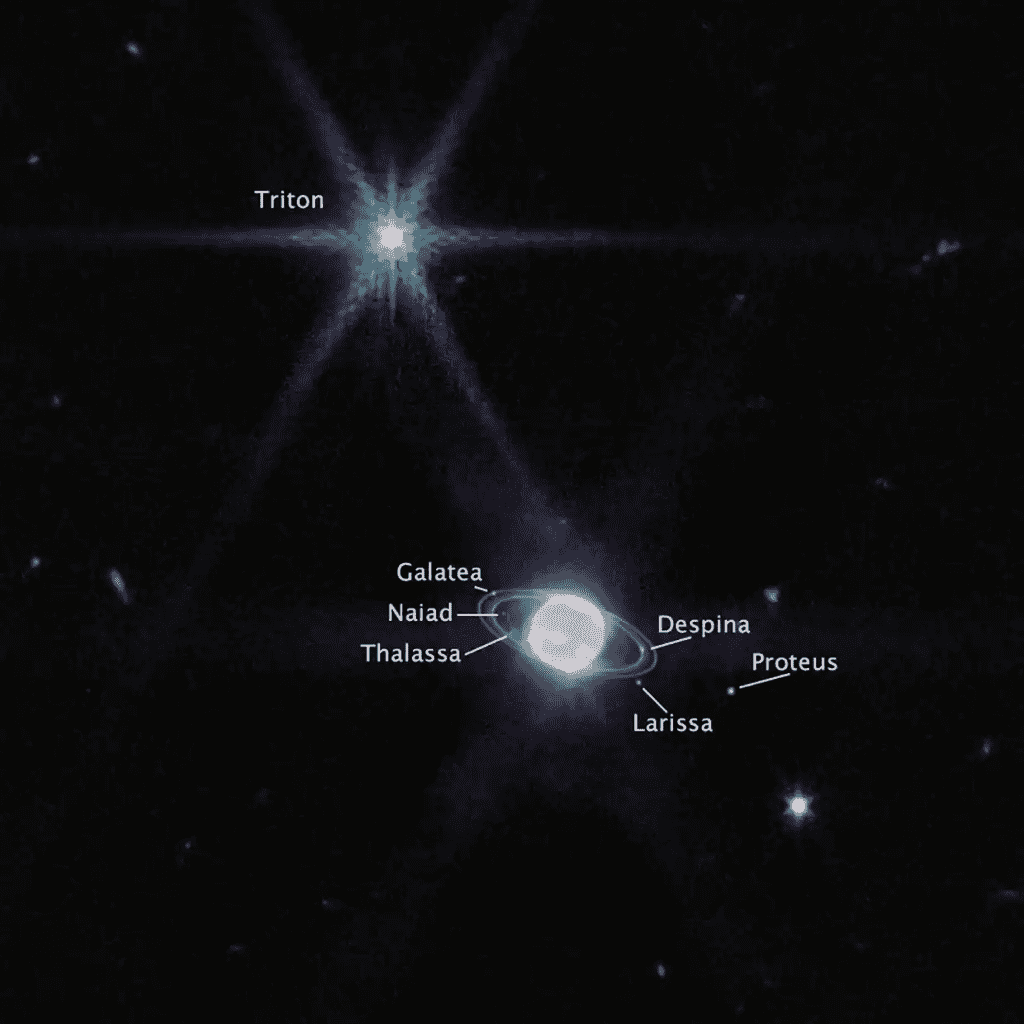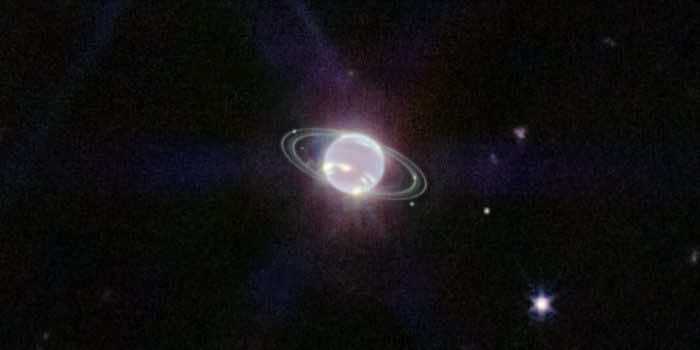The James Webb telescope has shifted its focus from the distant universe to our own solar system, capturing an image of a brilliant Neptune and its delicate, dusty rings in an extraordinary depth.
According to Mark McCaughrean, a senior consultant for research and exploration at the European Space Agency, Webb’s exceptional infrared imaging capacity has now allowed a new peek into Neptune’s atmosphere.
According to McCaughrean, who has worked on the Webb project for more than 20 years, the telescope “takes away all that glare and background” so that “we can start to pull out the atmospheric composition” of the planet.

Neptune appeared deep blue in earlier Hubble space telescope pictures owing to methane in its atmosphere. However, the planet seems greyish white in near-infrared wavelengths acquired by Webb’s primary imager NIRCam, with ice clouds striping the surface.
“The rings are more reflective in the infrared,” McCaughrean said, “so they’re much easier to see.”
According to NASA, the image also reveals an unusual brightness at the top of Neptune. However, astronomers have yet to see the planet’s north pole since it is tilted away from Earth and takes 164 years to round the sun.

Moreover, Webb also discovered seven of Neptune’s fourteen known moons. In a zoomed-out view, what seems to be a brilliant spiky star is Triton, Neptune’s unusual, massive moon haloed by Webb’s diffraction spikes.
Triton, bigger than Pluto, seems brighter than Neptune due to its ice coating, reflecting light. Meanwhile, Neptune “absorbs most of the light falling on it,” according to McCaughrean.

As astronomers explore the cosmos for additional planets like ours, they’ve discovered that ice giants like Neptune and Uranus are the most prevalent in the Milky Way.
“By studying these in great detail, we can key into our findings of other ice giants,” McCaughrean explained.
The most powerful space telescope ever created, Webb, has been in operation since July and has already generated enormous volumes of unheard-of data. It will, according to scientists, usher in a new era of discovery in the years to come.
“The kind of astronomy we’re seeing now was unimaginable five years ago,” McCaughrean said.


